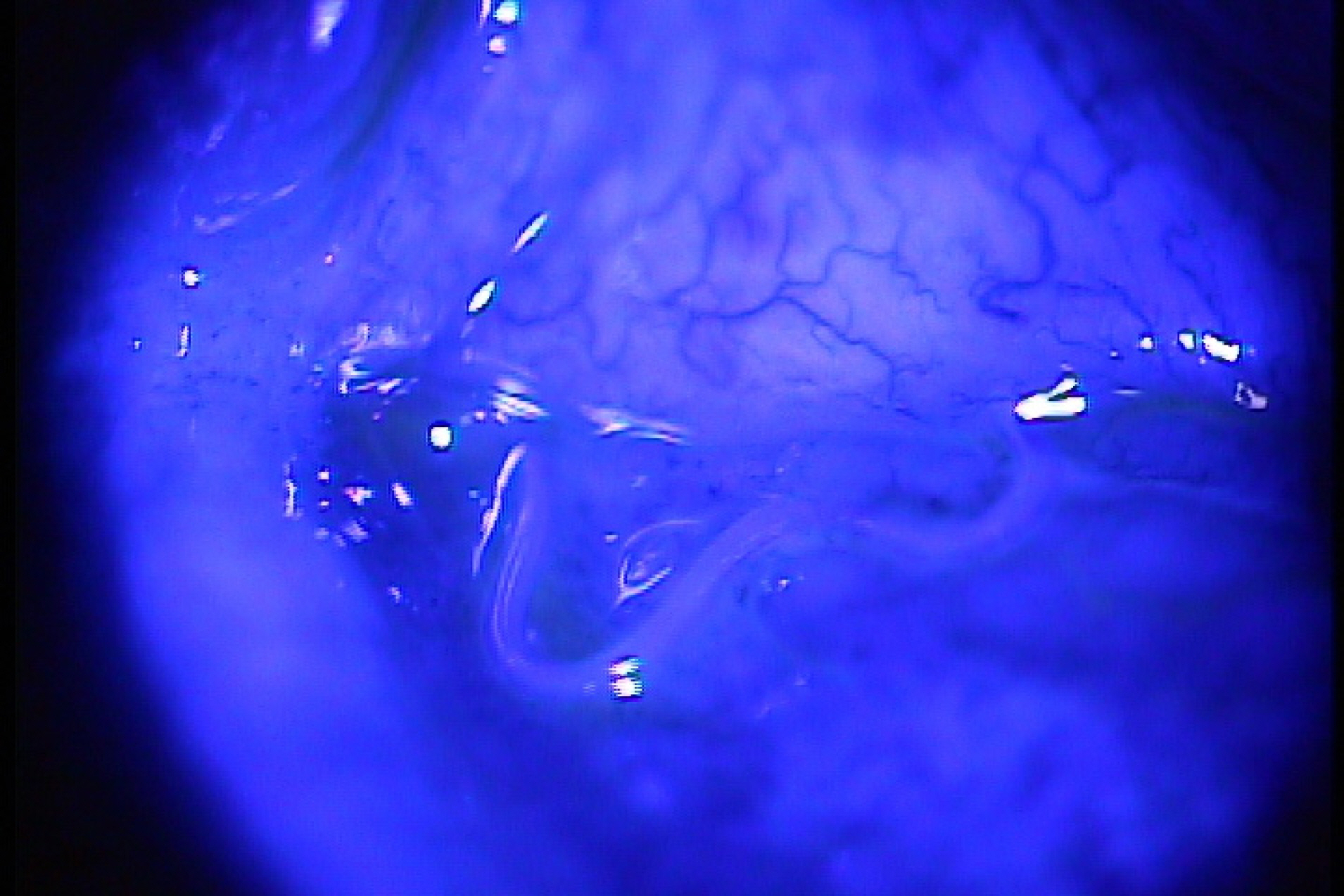J Korean Ophthalmol Soc.
2018 Sep;59(9):867-870. 10.3341/jkos.2018.59.9.867.
A Case of Twice Recurring Ocular Thelaziasis from Thelazia callipaeda
- Affiliations
-
- 1Department of Ophthalmology, Veterans Health Service Medical Center, Seoul, Korea. ezer75@hanmail.net
- KMID: 2420336
- DOI: http://doi.org/10.3341/jkos.2018.59.9.867
Abstract
- PURPOSE
We report a case of recurrent ocular thelaziasis by Thelazia callipaeda.
CASE SUMMARY
A 71-year-old male visited the ophthalmic clinic, complaining of itching, a foreign body sensation, and irritation in the right eye. He was previously diagnosed with Thelazia callipaeda infection, 3 months prior, at another hospital. A parasite, shaped like a thin small thread, was found in the conjunctival sac of his right eye, with active movement. The parasite was identified as Thelazia callipaeda by pathology. Four months after removal of the parasite, symptoms relapsed in the same eye. Two parasites were rediscovered and removed. Since then, no additional specific sign related to the parasite has been noted in follow- up examinations.
CONCLUSIONS
Due to frequent recurrence of infections caused by the short life cycle of the parasite, monthly follow-up examinations are required for at least 1 year after discovery of the parasite.
Keyword
MeSH Terms
Figure
Cited by 1 articles
-
A Case of
Thelazia Callipaeda Ocular Infection Identified in Patients with Subarachnoid Haemorrhage
Shin Hee Hong, Tae Hun Kim, Hye Jin Shi, Joong Sik Eom, Yoonseon Park
Korean J Healthc Assoc Infect Control Prev. 2022;27(1):77-79. doi: 10.14192/kjicp.2022.27.1.77.
Reference
-
References
1. Oh CK, Youn WS, Cho SY, Seo BS. A case report of human thelaziasis. J Korean Ophthalmol Soc. 1975; 16:431–4.2. Burnett HS, Parmelee WE, Lee RD, Wagner ED. Observations on the life cycle of Thelazia californiensis Price, 1930. J Parasitol. 1957; 43:433–8.
Article3. Kofoid CA, Williams OL. The nematode Thelazia californiensis as a parasite of the eye of man in California. Arch Ophthalmol. 1935; 13:176–80.
Article4. Yamaguchi T. A Color Atlas of Clinical Parasitology (Wolfe abdominal atlases). London: Wolfe Medical Publications Ltd.;1981. p. 170–1.5. Nakata R. Example of the parasite Thelazia callipaeda in human in Korea. J Chosun Med Soc. 1934; 24:939–44.6. Otranto D, Dantas-Torres F. Transmission of the eyeworm Thelazia callipaeda: between fantasy and reality. Parasit Vectors. 2015; 8:273.
Article7. Krishnachary PS, Shankarappa VG, Rajarathnam R, Shanthappa M. Human ocular thelaziasis in Karnataka Indian. J Ophthalmol. 2014; 62:822–4.8. Zakir R, Zhong-Xia Z, Chiodini P, Canning CR. Intraocular infestation with the worm, Thelazia callipaeda. Br J Ophthalmol. 1999; 83:1194–5.
Article9. Nakata R. Study on Thelazia callipaeda. Jpn J Parasitol. 1964; 13:600–9.10. Choudhury AR. Thelaziasis. Am J Ophthalmol. 1969; 67:773–4.
Article11. Jeong JW, Park JW, Kong HH, et al. A case of intraocular Thelasia callipaeda infestation. J Korean Ophthalmol Soc. 2006; 47:1517–22.12. Schultz GR. Intraocular nematode in man. Am J Ophthalmol. 1970; 70:826–9.
Article13. Kim YK, Song BR, Yoo JH, et al. Two cases of human thelaziasis. J Korean Ophthalmol Soc. 1994; 35:95–100.14. Lee CH, Kim SY, Kim DC, Choi TY. 5 cases of human thelaziasis. J Korean Ophthalmol Soc. 1998; 39:2827–31.15. Yim CH, Ko JH, Lee JH, et al. A pediatric case of thelaziasis in Korea. Korean J Parasitol. 2016; 3:319–21.
Article



